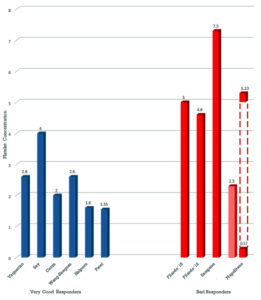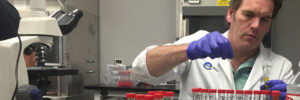The PRP Conundrum: Unveiling the Optimal Platelet Concentration
Platelet-Rich Plasma (PRP) has taken the regenerative medicine world by storm. But with its growing popularity comes a crucial question: what’s the ideal PRP composition? This two-part blog series delves into the science behind PRP, starting with the concentration of its key player – platelets.
Part 1: PRP vs PPP – Unveiling the Power of Platelets
Before diving into concentration, let’s establish PRP’s clear advantage over its less potent cousin, Platelet-Poor Plasma (PPP). Numerous studies have compared their effectiveness in areas like reducing oxidative stress, promoting cell growth, and even aiding nerve regeneration. Overwhelmingly, PRP emerges victorious, highlighting the crucial role of platelets in healing.
The Concentration Conundrum: Is More Really More?
Our natural instinct might be to think higher platelet concentration equals better results. However, scientific evidence paints a more nuanced picture.
In the Lab: Cells Speak Volumes
Starting with in-vitro studies, researchers have observed a fascinating trend. Using cells from various animals and humans, studies by Yoshida et al., Choi et al., Boswell et al., and Mazzocca et al. consistently reported that lower concentrations of PRP stimulated cell growth and viability, while higher concentrations hindered it. This suggests a potential “too much of a good thing” scenario.
From Bench to Bedside: In Vivo Evidence
Animal studies echo these findings. Researchers at Harvard (Mastrangelo 2011, Fleming 2015) investigated ligament repair in pigs using varying PRP concentrations. While all PRP groups showed improvement, a lower concentration (1X) surprisingly yielded better results in older pigs compared to higher ones (3X and 5X). This could be due to the inherent better healing capacity of younger animals used in the initial study. Additionally, the higher concentration groups lacked leukocytes, which recent research suggests are beneficial for tendon repair.
The Plot Thickens: Pain Points and Optimal Concentrations
Studies by Filardo et al. (osteoarthritis) and LaPrade et al. (ligament injury) highlight the complexities further. While both showed improvement in all PRP groups compared to controls, the higher concentration groups experienced more pain and swelling (Filardo et al.) or weaker ligaments (LaPrade et al.). This underscores the influence of additional factors like leukocyte content alongside platelet concentration.
A Glimpse of Hope: Lower Might Be Better
Aydin et al.‘s study on colonic healing observed superior results with a lower PRP concentration. Additionally, Yaradilmis et al.‘s research on knee arthritis, while favoring higher concentrations (though still relatively low at 4.7X), reinforces the overall trend – extreme concentrations might not always be best.
The Takeaway: A Balancing Act
The current evidence suggests a fascinating shift in our understanding of PRP. While platelets are clearly beneficial, their optimal concentration appears to vary depending on the application and potentially other factors like leukocyte content. More research is needed, but the message is clear: a “one-size-fits-all” approach to PRP doesn’t exist.
PRP for Osteoarthritis: Unveiling the Sweet Spot for Platelet Concentration
Platelet-rich plasma (PRP) has emerged as a promising treatment for osteoarthritis, but questions remain about its optimal use. This blog post dives into recent research on the impact of platelet concentration in PRP therapy for osteoarthritis.
Beyond the Hype: Unveiling the Data
A 2017 meta-analysis by Dai et al. in Arthroscopy analyzed 10 randomized controlled trials involving over 1,000 patients. While PRP generally outperformed hyaluronic acid (HA) in pain relief and function, interestingly, when they looked specifically at PRP concentrations above 5 times baseline (5X), HA actually performed better.
This finding was further supported by a comprehensive analysis by Milants et al. in 2017. They reviewed 19 trials with nearly 2,000 patients and went beyond just statistical significance. They focused on a clinically relevant measure called Minimal Clinically Important Improvement (MCII), which signifies a noticeable difference for the patient. They also set a high bar for success, requiring more than double the MCII improvement.
The Sweet Spot Emerges
Their analysis, summarized in Figure 1 (not shown here but likely a graph depicting PRP concentration vs. positive outcomes), revealed a potential “sweet spot” for platelet concentration in PRP for osteoarthritis. This sweet spot seems to lie between 1.5X and 4X baseline platelet concentration. The authors concluded that for osteoarthritis, a concentration below 5X is likely preferable.
Conclusion: Less Can Be More
Despite PRP’s growing use, uncertainties remain regarding injection volume, frequency, and optimal composition. While the final answer on composition is still evolving, this review suggests that “too much of a good thing” might apply to platelet concentration in PRP for osteoarthritis. As research progresses, we’ll likely refine PRP administration methods.



